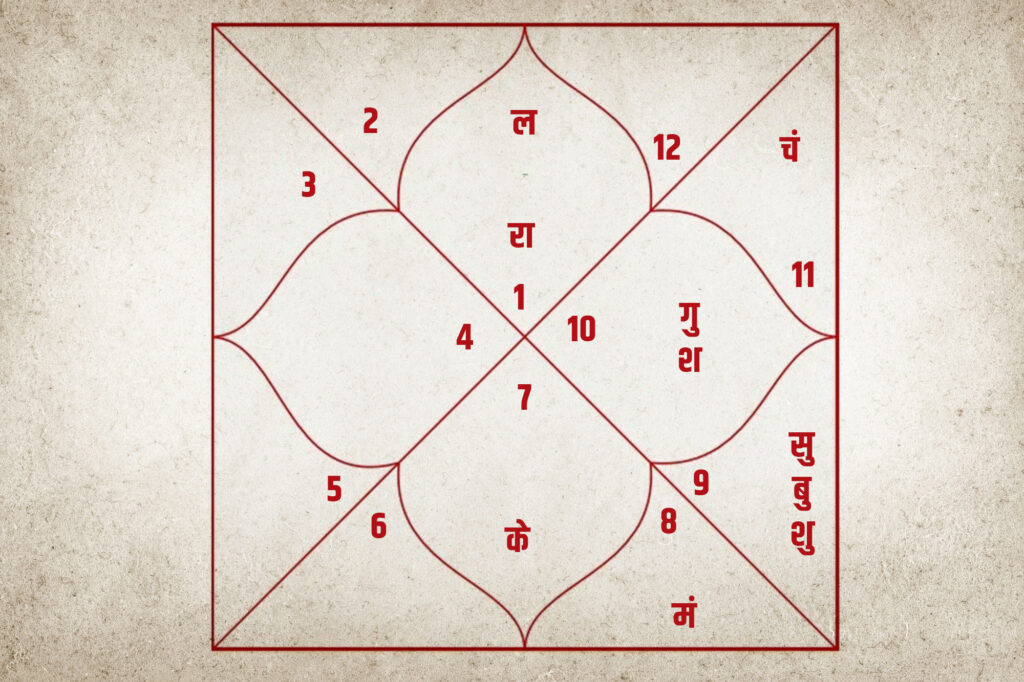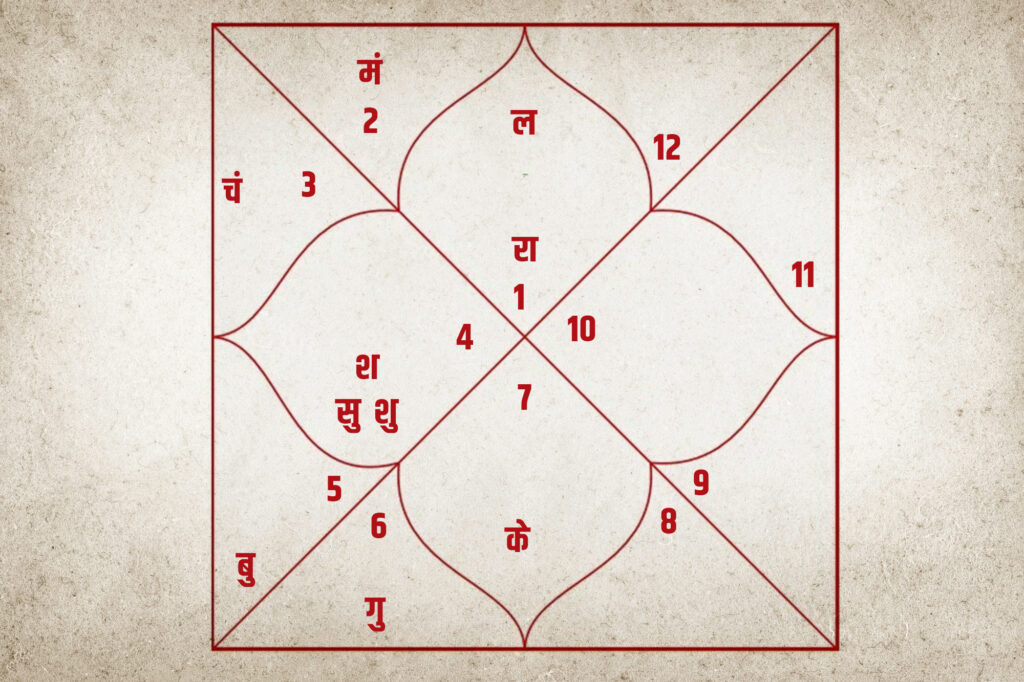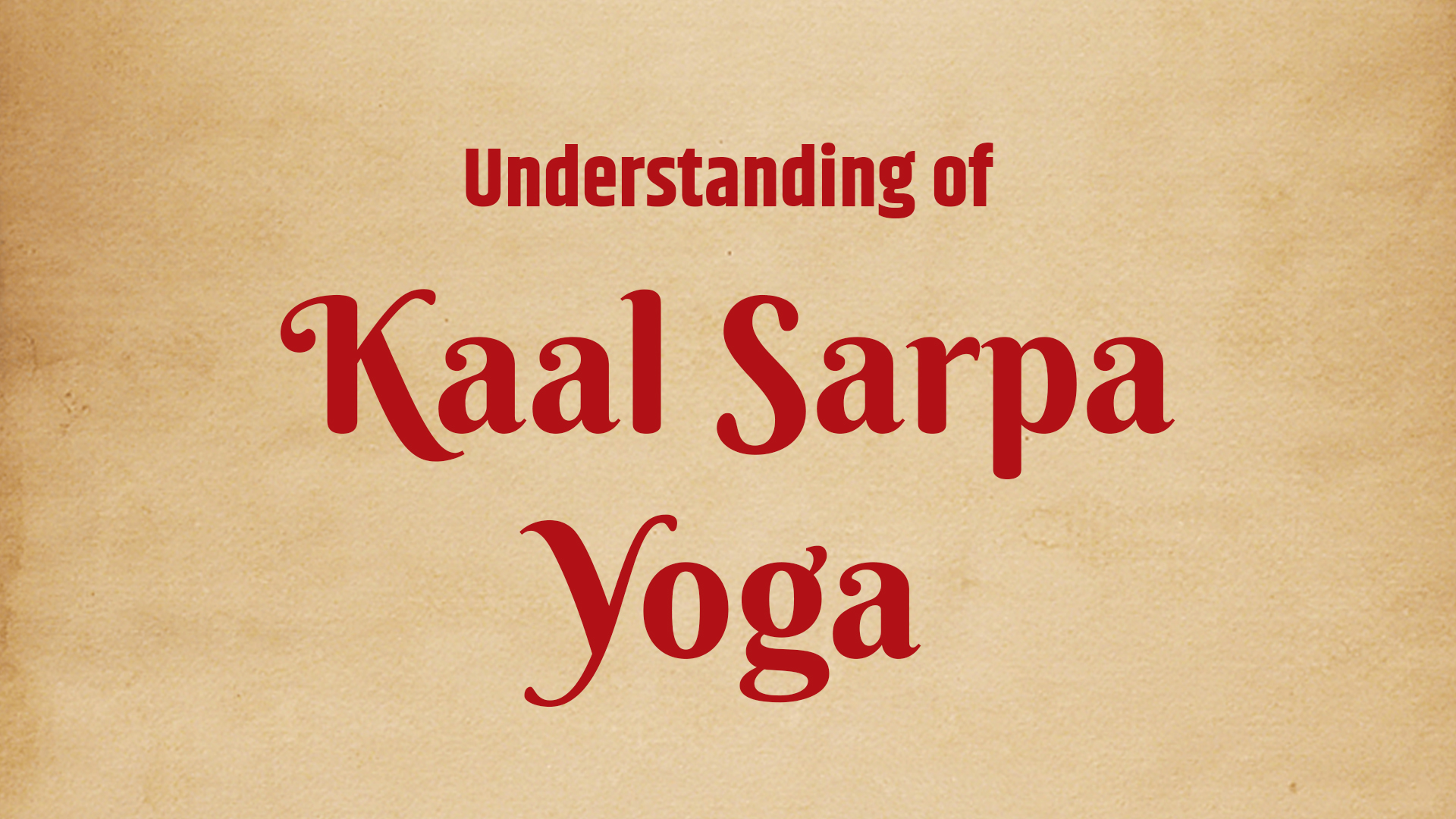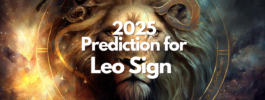Kaal Sarpa Yoga is a well-known term in the world of astrology, often used during Kundli consultations. It is widely believed to indicate karmic consequences from past lives and is considered one of the most formidable yogas in astrology. But is this belief accurate? Do we truly understand Kaal Sarpa Yoga?
Before drawing any conclusions, let’s explore the different narratives surrounding Kaal Sarpa Yoga. There are two distinct groups with conflicting perspectives on its existence. One group believes in this yoga, claiming that individuals with it in their Kundli face prolonged challenges and obstacles to growth. On the other hand, some refute the existence of Kaal Sarpa Yoga, citing its absence in Indian Astrology. Surprisingly, amidst the extensive mention of rare yogas in Indian Astrology, Kaal Sarpa Yoga is absent, with no mention in any classic texts.
Despite the absence of a specific verse for Kaal Sarpa Yoga in Indian Astrology, there is a traditional verse upon which its concept is based. However, the true source of this verse remains elusive. Let’s take a closer look at the verse:
“अग्रे राहुरधः केतु सर्वे मध्यं गता ग्रहाः।
योगो अयं कालसर्पाख्यः सर्वकार्य विनाशकः।।
– परंपरागत श्लोक
Above, Rahu; below, Ketu; all planets placed in between,
This yoga, known as Kaal Sarpa, destroys all endeavors.”
– Traditional Verse
In this narrative, the focal point lies on the malefic influence of Rahu and Ketu. Before delving into the aforementioned principle, it is essential to explore the story of the origin of Rahu and Ketu.
According to the Bhagvat Purana, the “Samundra-Manthan” was organized by deities and demons to obtain the Amrit. As the Samundra-Manthan concluded, the Amrit emerged from the sea. However, a dispute arose between the deities and demons regarding who would have the Amrit first. This led to a confrontation and the brink of war. At that critical moment, an enchanting woman named Mohini appeared. Scriptures recount that Mohini was none other than an avatar of Lord Vishnu himself, created to outwit the demons.
Mohini revealed to the demons that the upper surface of the Amrit pot contained water, while the actual Amrit lay below. She promised to give the water to the deities first, allowing the demons to receive the true Amrit. The demons, swayed by Mohini’s words, agreed to her plan. Mohini commenced offering Amrit to the deities. However, a demon named Swarbhanu disguised himself as a deity and positioned himself between the Sun and the Moon. As the Sun and Moon received the Amrit, Swarbhanu also partook of it. Upon discovering Swarbhanu’s ruse, the Sun and Moon informed Mohini, who was in truth Lord Vishnu in his Mohini form. This incident is detailed in the verses of the Shrimad Bhagavad Purana:
“देवलिङ्ग प्रतीच्छन्नः स्वर्भानुर्देवसंसदि।
प्रविष्टः सोम पिबत्चन्द्रार्काभ्यां च सूचितः।।”
– श्रीमद भागवत पुराण
Upon discovering that Swarbhanu was a demon, Lord Vishnu swiftly wielded his Sudarshan Chakra to sever Swarbhanu’s head. However, as the demon had already imbibed the Amrit, he remained immortal and did not succumb to this injury. Swarbhanu’s body was subsequently divided into two parts – the head and the body. Later, when Swarbhanu, having consumed the Amrit, was seated among the deities, Brahma Ji transformed him into a celestial body. Swarbhanu’s head became known as Rahu, while his body took the form of Ketu.
This fascinating tale highlights the genesis of Rahu and Ketu, characterized as malefic planets due to their association with the demon. Now, let us explore the concept of Kaal Sarpa Yoga through the analysis of Kundli examples.

In the provided Kundli, Aries Lagna is present, with Rahu positioned in the first house and Ketu in the seventh house opposite Rahu. As Rahu and Ketu are perpetually in retrograde motion, we consider Rahu as the starting point and Ketu as the last axis. In this context, we account for the houses falling within the anti-clockwise or reverse path of Rahu and Ketu. For this Kundli, these houses are 1, 12, 11, 10, 9, 8, and 7. If all the planets are situated within these considered houses, exclusively along the retrograde path, then Kaal Sarpa Yoga is said to be present. Notably, in this Kundli, all the planets are aligned between Rahu and Ketu along the retrograde path, meeting the criteria for a classic example of Kaal Sarpa Yoga. Now, let us turn our attention to Kundli No. 2.

Similarly, in Kundli No. 2, Aries Lagna is present with Rahu in the first house and Ketu in the seventh house, positioning them opposite each other to form a 180° axis. All planets in this Kundli also appear on one side of the Rahu-Ketu axis. However, in contrast to the previous Kundli, all the planets here are situated in the clockwise direction of the Rahu-Ketu axis. This indicates that the planets are located outside the body of the shadow planet, rather than within it. Consequently, there is no formation of Kaal Sarpa Yoga in Kundli No. 2.
The notion that having all planets on one side of the Rahu-Ketu axis leads to the formation of Kaal Sarpa Yoga is a misconception, as the precise definition requires all planets to be situated exclusively between Rahu and Ketu, and nowhere else. This implies that from Rahu, all planets should be aligned in an anti-clockwise direction until the path converges with Ketu, in accordance with the symbolism of Rahu as the head of Swarbhanu and Ketu as the body. Therefore, the formation of Kaal Sarpa Yoga is contingent upon the placement of all seven traditional planets – Sun, Moon, Mars, Mercury, Jupiter, Venus, and Saturn – within the anti-clockwise path of Rahu and Ketu.
In addition to this definition, an unidentified traditional scripture outlines an exceptional provision for the occurrence of Kaal Sarpa Yoga, highlighting the profound impact of this Yoga. According to this exceptional clause in the undisclosed traditional scripture:
राहु मुखे ग्रह योगो नो योगो चापि केतुविभ्रष्टे।
पाते खेट विमुक्ते वा विलग्नेन विना च योगो नो।।
– परंपरागत श्लोक
“If there is any other planet sited in any of the houses where either Rahu or Ketu are positioned, then Kaal Sarpa Yoga is not formed.”
While extensive research has been conducted on Kaal Sarpa Yoga and exceptions have been documented, there is no specific verse in our scriptures that can verify the existence of such a Yoga. Based on this, it can be deduced that there is no need to fear Yoga for which no verses have been provided in our scriptures. If this Yoga were truly alarming, our scriptures would have undoubtedly provided detailed mentions of it.
Furthermore, there are non-expert astrologers with limited knowledge who believe that when all planets, except for a few, are positioned between the axis of Rahu and Ketu, it constitutes Partial Kaal Sarpa Yoga. However, since there is no mention of Kaal Sarpa Yoga in the entire astrological scriptures, it is impossible to find any reference to partial Kaal Sarpa Yoga. As a result, I firmly believe that the concept of partial Kaal Sarpa Yoga is unfounded. If any astrologer informs you of a partial Kaal Sarpa Yoga in your Kundli, do not believe it, as there is no evidence of such a partial Yoga.
In an obscure traditional scripture verse, it is stated:
“सर्वकार्य विनाशकः।।”
– परंपरागत श्लोक
Some scholars interpret this verse as not intended for individual Kundlis. They propose that, according to the verse, the time when all the planets come between Rahu and Ketu during any transit is globally destructive. They argue that this verse pertains exclusively to Mundane Astrology. However, this interpretation is contentious, as it implies that whenever any of the giant planets, such as Jupiter or Saturn, seem to move behind Rahu at regular intervals, Kaal Sarpa Yoga is formed between the first and fifth months of that year. If this theory is accepted, it suggests that the destructive effect of Kaal Sarpa Yoga on the entire world spans five months. Since it is illogical for such a global impact to occur at regular intervals, the full application of the principle of Kaal Sarpa Yoga in Mundane Astrology is not entirely justified.
Another misconception regarding this Yoga is found on various websites and social media platforms, where articles or videos describe 12 different types of Kaal Sarpa Yoga. These 12 types are named based on Rahu’s position in the Kundli. For example, if Kaal Sarpa Yoga forms in the Lagna of the Kundli, it is called Ananta Kaal Sarpa Yoga. Similarly, if it forms in the second house, it is called Kulika Kaal Sarpa Yoga, and so on for the other 10 types. However, these names are assigned based on the depiction of Rahu and Ketu as serpents. The 12 types of Kaal Sarpa Yoga are classified according to 12 different kinds of snakes. Nonetheless, there is scriptural evidence that challenges the classification of Rahu and Ketu within the Sarpa (serpent) or Naga (snake) category. As an example of such evidence, Vara Mihir in Brihat Samhita has stated in Brihat Samhita that some people consider Rahu, the son of a Lion as the form of a snake. But it is not true at all because, in reality, Rahu and Ketu are shapeless. Let’s see the verse of Brihat Samhita:
मुख पुच्छ विभक्तंगं भुजङ्गम् आकारं उपदिशन्ति अन्ये।
कथयन्ति अमूर्तं अपरे तमोमयं सैन्हिकेय आख्यम्।।
– बृहत् संहिता
Not only this verse, but even the story of Shrimad Bhagwad Purana has mentioned that Rahu and Ketu originated from the demon named Swarbhanu and therefore, they can’t be of Sarpa Yoni.
Now, there is a story given in Mahabharata to substantiate that the deities, the demons, and the sarpa yoni are different. It has been clearly stated in the Adiparva of Mahabharata that Daksha Prajapati had given birth to 50 daughters for the creation of the universe. Out of the 50 daughters of Daksha Prajapati, 27 daughters got married to the moon. We know them as the 27 Nakshatras of the universe. 10 daughters of Daksha Prajapati got married to Dharma. The remaining 13 daughters were married to Kashyap Rishi. Let’s see the verse of Mahabharata:
ददौ स दक्ष धर्माय कश्यपाय त्रयोदश।
कालस्य नयने युक्तां सप्तविन्शतिं इन्दवे।।
– महाभारत
Upon dissecting the verse, we uncover that the progeny of Kashyap Rishi and Aditi were deities, those of Kashyap Rishi and Diti were demons, and the offspring of Kashyap Rishi and Kadru were of the sarpa yoni. This episode from the Mahabharata distinctly delineates the disparity between demons and the sarpa yoni. As Swarbhanu was a demon and not a sarpa, it is evident that no scriptural basis or evidence supports the promotion of 12 different types of Kaal Sarpa Yoga, rendering this entire belief questionable.
Having established that Kaal Sarpa Yoga is not as calamitous as widely construed, the ensuing inquiry revolves around the expected implications when such a combination of Kaal Sarpa Yoga materializes in the Kundli. Maharishi Parashar’s Paap Kartari Siddhanta posits that the auspiciousness of any planet or house diminishes when it is positioned between malefic or sinful planets.
पापमध्यगते लग्ने चन्द्रोऽपि क्रूरसंयुतः।
लग्नसप्तमगौ पापौ सत्यमेव मृतिं वदेत्।।
– महर्षि पराशर
According to this principle, if a planet or house loses its auspiciousness while situated between malefic planets, it can be assumed that all the planets will experience some degree of loss in auspiciousness when Kaal Sarpa Yoga occurs, as all the planets will be positioned between the malefic planets Rahu and Ketu.
If you seek to understand how the occurrence of Kaal Sarpa Yoga in your Kundli will affect you based on the principle of Paap Kartari Yoga, it is advisable to consult expert astrologers with in-depth knowledge of astrology. These experts will provide precise insights into which planets in your Kundli will undergo diminished auspiciousness and to what extent. Before consulting astrologers, it is important to verify the presence of Kaal Sarpa Yoga in your Kundli based on principles outlined in traditional scriptures.
To comprehend the potential impacts of the formation of Kaal Sarpa Yoga in the context of Mediniya Jyotish, it is recommended to seek guidance from learned astrologers proficient in Samhita. They can offer precise information on the regions that may be susceptible to calamities or adverse effects during the formation of Kaal Sarpa Yoga. It is illogical to believe that the entire world will uniformly experience adverse effects from this Yoga.
From the above information and scriptural evidence, you may have discerned which beliefs or narratives regarding Kaal Sarpa Yoga are true and which ones are not entirely accurate.
Finally, in the tale of Samundra-Manthan, even Lord Vishnu in the form of Mohini Avatar was unable to recognize Swarbhanu posing as a deity, with only the Sun and the Moon able to identify the disguised demon. Therefore, to comprehend the true nature of Rahu and Ketu, it is recommended to study the scripture witnessed by the Sun and the Moon. Only through an examination of this scripture can we fathom the effects of Rahu and Ketu in our Kundli.
In the book “Piyushdhara,” Gargacharya Ji provides a profound verse:
प्रत्यक्षं ज्योतिषं शास्त्रं चन्द्रार्कौ यत्र सक्षिणौ।
– पियुष धारा, महर्षि गर्गाचार्य
“The scripture witnessed by the Sun and the Moon is Astrology.”
Just as the Sun and the Moon could only reveal the guise of Swarbhanu, astrology likewise serves as the sole means to gauge the severity of planetary yoga forming in our Kundli. Thus, it is advisable to seek the assistance of astrology to gain insight into the effects of planetary yoga in your Kundli and not to fear the presence of Kaal Sarpa Yoga.
Shubham Bhavatu.








